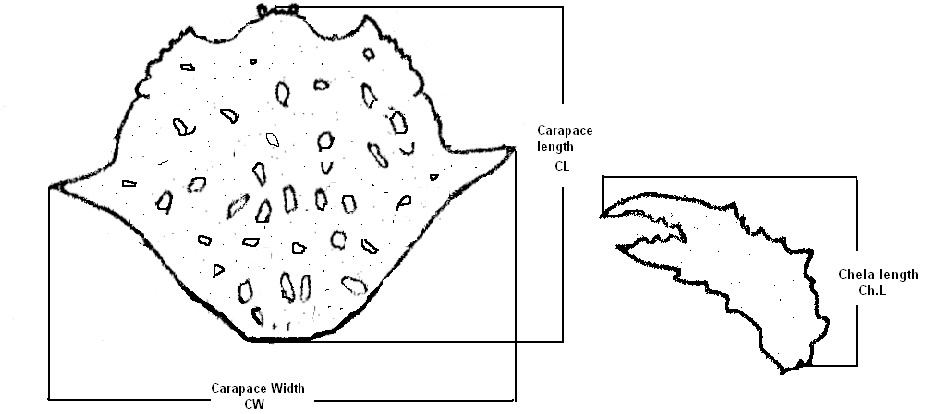Distribution, Abundance and Population Ecology of Ashtoret lunaris (Forskel, 1775) and Matuta planipes Fabricius, 1798 from the Sonmiani Bay (Lagoon), Pakistan
Distribution, Abundance and Population Ecology of Ashtoret lunaris (Forskel, 1775) and Matuta planipes Fabricius, 1798 from the Sonmiani Bay (Lagoon), Pakistan
Noor Us Saher1, Zunaira Amanat2, M. Asif Gondal3 and Naureen Aziz Qureshi4,*
Coastline of Pakistan showing the location of Sonmiani Bay (Miani Hor) Lagoon.
Diagrammatic presentation of Ashtoret lunaris (Forskal, 1775) Morphometric measurements (TL, Carapace length CW, Carapace width and Ch. L., Chela length).
Monthly percent occurance of M. planipes and A. lunaris in the coastal waters of Sonmiani bay (Apr. 2005 - Mar. 2007).
The growth curves (A, male; B, female) showing the size of carapace of 50% popultion of M. planipes attained sexual maturity in Sonmiani bay (Apr. 2005 - Mar. 2007).
The growth curves (A, male; B, female) showing the size of carapace of 50% population of A.lunaris attained sexual maturity in Sonmiani bay (Apr. 2005 - Mar. 2007).


















